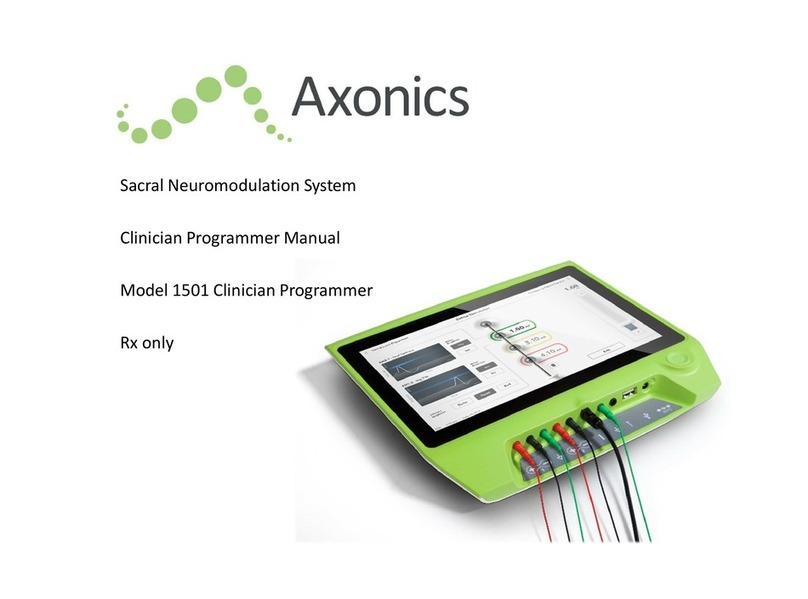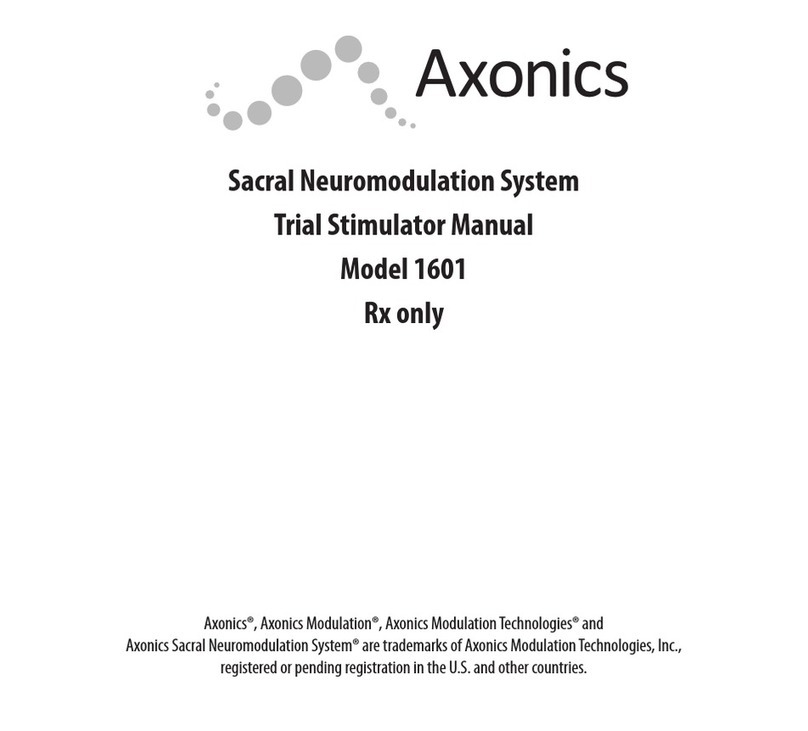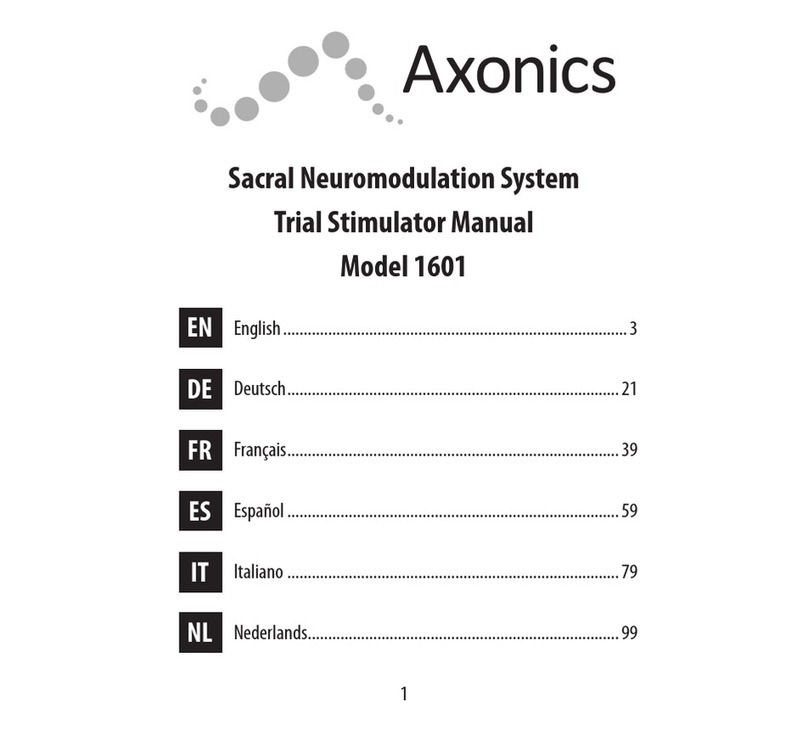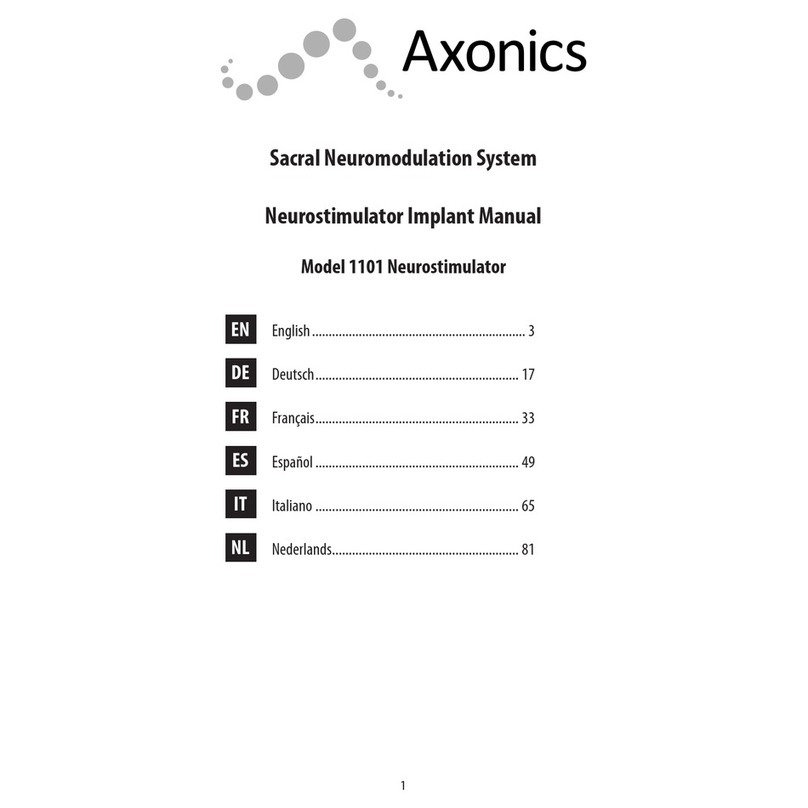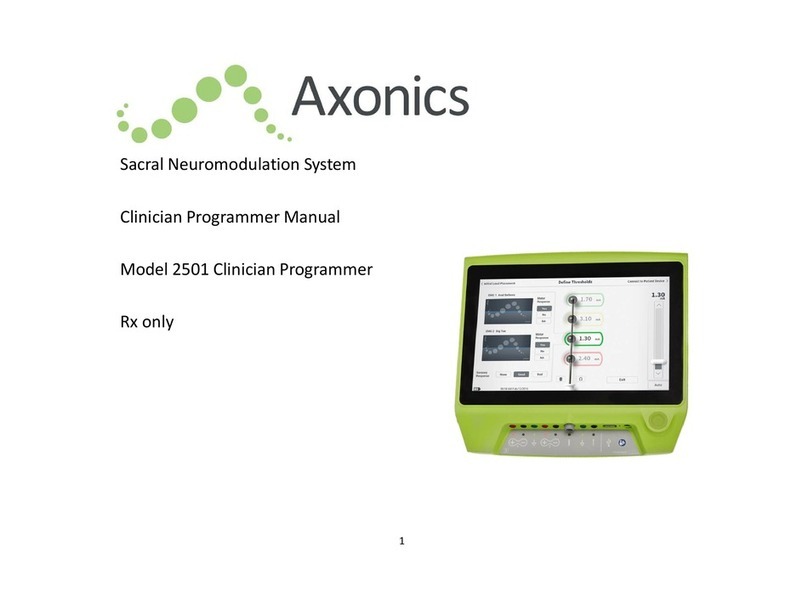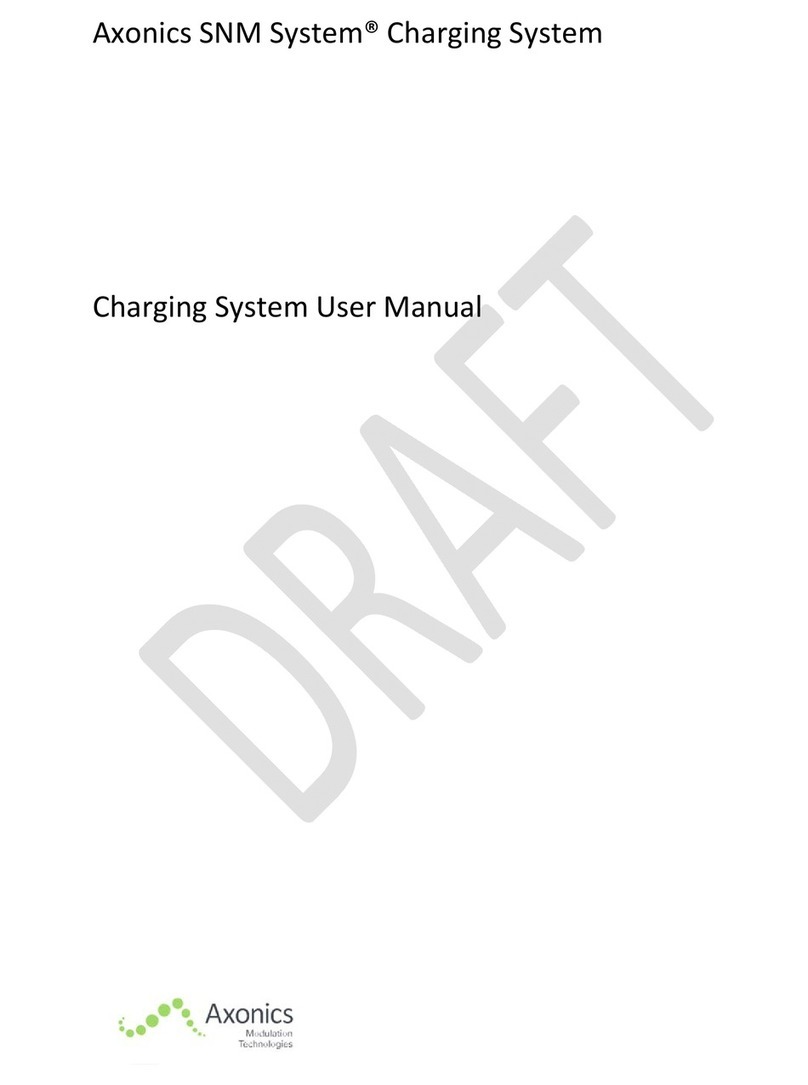
3
■Introduction .................................5
■Purpose of the Trial System
■Axonics SNM System for Urinary Control...........6
■Indications
■Precautions
■Contraindications
■Axonics SNM System for Bowel Control ...........7
■Indications
■Precautions
■Contraindications
■Precautions ..................................8
■Parameter Adjustment
■Sensitivity to Stimulation
■Programmer Interaction with Flammable
Atmospheres
■Programmer Interaction with OtherActive
Implanted Devices
■Telemetry Signal Disruption from EMI
■Device Specifications ..........................9
■Operating Characteristics
■StorageandUsageEnvironment
■Maintenance
■Handling and Disposal
■Wireless Communication
■Start‐up and General Functions. ................12
■SummaryofClinician Programmer Buttons and
Connections
■Turning the Clinician Programmer On and Off
■Logging-in to the Clinician Programmer
■NavigatingtheHomescreen
■Description of Battery Level Icons and Charging
■Introduction to Clinician Programmer Prompts
■Understanding Impedance Values
■Controlling Stimulation Amplitude
■Test Stimulation During Lead Implantation. .......23
■Foramen NeedleTestStimulation
■PNE Lead TestStimulation
■Define Tined Lead Thresholds
■Programming the Stimulator ...................33
■Connecting toaStimulator
■Patient Device Screen Overview
■Setting Up a NewStimulator
■Viewingthe Status ofaStimulator
■Resetting the Stimulator
■Programming the Stimulator Stimulation Settings
■Home Screen Tools...........................55
■Clinician Programmer Settings
■Reports
■Troubleshooting..............................67
■Issues with the CP display
■Issues Communicating with a Stimulator
■Issues DeliveringStimulation
■Impedance Issue During Lead Implant
■Impedance Issuewith the Stimulator
■Label Symbols................................72
Table of Contents
110-0054 rev E_output.indd 3 11/20/18 8:06 AM






